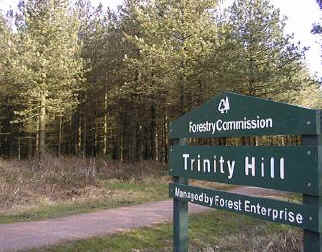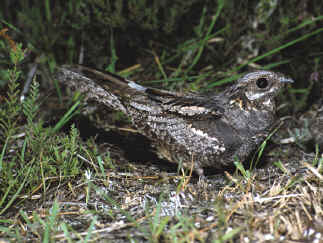 Forestry Commission
Forestry Commission
 Forestry Commission
Forestry Commission
 |
Trinity Hill in East Devon This is an area of heath that adjoins the Trinity Hill Common Local Nature Reserve (LNR). The dominant vegetation is ling, with minor Rhododendron infringement and scattered groups of poor European larch adjacent to the roadside. A robust earth bank separates it from the LNR. Although this conservation site is designated a ride for invertebrate species as well as reptiles, it's principle value is as a heathland nesting area for the Nightjar. |
 Image courtesy of RSPB Image courtesy of RSPB |
The requirements for a good Nightjar breeding habitat are:
1. A continuing programme of clear-fell and restock on wooded former heath, or open heath with Silver birch clumps and isolated Scots pines.
2. Forest design should take into account the need for wide rides with scaloped edges. This should be created at planting time.
3. Providing one avoids creating windblow conditions it may be possible to sculpture existing forest and ride edges by widening and scalloping suitable tracks and verges, especially where heath is available. This provides food and flight paths for the bird.
The forested area adjoining the conservation site is fronted by a small car park that provides limited parking for those interested in exploring the site and the neighbouring woodlands. A newly designated Bridleway now runs along the border of the conservation site.
Forestry Commission Trinity Hill Nature Reserve